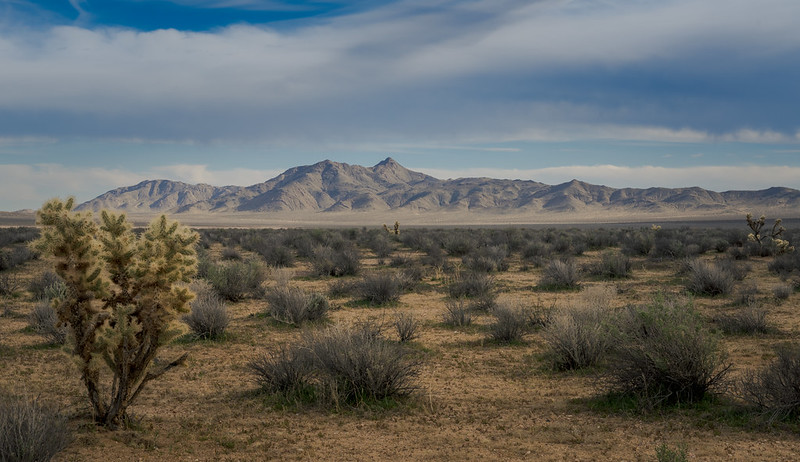Grass Valley Wilderness

The expansive Grass Valley covers nearly three-fourths of this Wilderness and ranks as its primary topographical feature. The area lies fairly flat, with a series of scattered hills, yellow to reddish brown in color, with elevations from 200 feet to 600 feet above the desert floor to the west.
You'll find a few Joshua trees, but the vegetation is dominated by a creosote bush scrub community. Raptors forage here, and desert tortoises and Mojave ground squirrels find suitable habitat in this barren area, which is devoid of both water and trails. The non-Wilderness corridor of an old road divides the Wilderness into eastern and western halves, and the China Lake Naval Weapons Center shares the eastern border.
For more information about this wilderness, please visit Wilderness Connect.
Leave No Trace
How to follow the seven standard Leave No Trace principles differs in different parts of the country (desert vs. Rocky Mountains). For more information on any of the principles listed below, please visit Leave No Trace, Visit the Leave No Trace, Inc. website..
- Plan Ahead and Prepare
- Travel and Camp on Durable Surfaces
- Dispose of Waste Properly
- Leave What You Find
- Minimize Campfire Impacts
- Respect Wildlife
- Be Considerate of Other Visitors
Rules and Regulations
Motorized equipment and equipment used for mechanical transport are generally prohibited on all federal lands designated as wilderness. This includes the use of motor vehicles (including OHVs), motorboats, motorized equipment, bicycles, hang gliders, wagons, carts, portage wheels, and the landing of aircraft including helicopters, unless provided for in specific legislation. In a few areas some exceptions allowing the use of motorized equipment or mechanical transport are described in the special regulations in effect for a specific area. Contact the agency for more information about regulations.

